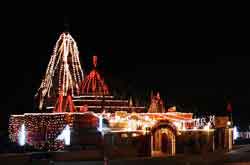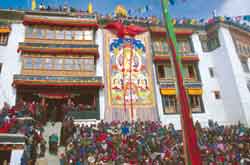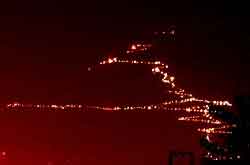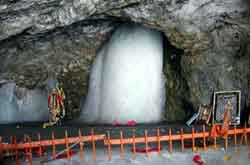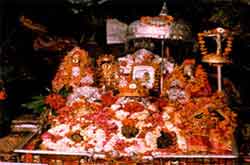Drokhpas and the ant’s Gold (Part-II)
An article by M. Ashraf, former Director General of Tourism, Jammu & Kashmir
The story of Michel Peissel’s visit to Ladakh is very interesting and full of controversies. He is the famous French author who has written more than 20 books on his explorations in the Himalaya and other places. He claims to be an anthropologist. He wrote a book about Drokhpas called, “L’Or des Fourmis” which means the Ant’s Gold. Peissel bases his book on the Greek legend first mentioned by the Greek historian Herodotus in 450 B.C., that in northern India there was a species of gigantic ant ("bigger than a fox, though not so big as a dog") that burrowed in gold-rich soil. In Book 3, passages 102 to 105, Herodotus reports that a species of fox-sized, furry "ants" lives in one of the far eastern, Indian provinces of the Persian Empire.
This region, he reports, is a sandy desert, and the sand there contains a wealth of fine gold dust. These giant ants, according to Herodotus, would often unearth the gold dust when digging their mounds and tunnels, and the people living in this province would then collect the precious dust. Peissel is supposed to have asked the Drokhpas whom he calls the Minaro tribesmen about the story, only to be told that their ancestors did collect gold-bearing sand from the burrows of a local marmot, known scientifically as Marmota himalayanus. Peissel feels that the legend of the ants may have arisen because of etymological confusion between marmot and the Greek word for ant (murmêx).
Instead of Drokhpas he calls these people “Minaro” as given in the Greek legend. According to Peissel, unlike their neighbours in the mountains of Kashmir, the “Minaro” or Drokhpas have curiously light complexions and sharp, high-cheeked faces almost European in character. The entire tribe consists of only about 800 people, but these hardy, isolated mountain folk may have a cultural significance far out of proportion to their small numbers.
They live in adobe huts, erect great druidic stone monuments and centre their livelihoods on the ibex, a wild mountain goat that they hunt with arrows tipped with the poison wolfs bane (rock carvings of the ibex are scattered throughout their mountains). The Minaro also raise sheep and goats, grow grapes, from which they make wine, and in spite of an arid climate, plant a little grain. Though white-bearded elders preside symbolically over village ceremonies, says Peissel, who claims to have spent six months studying them, the Minaro are a matriarchal society. Most married women have more than one husband. The women dominate the men. The principal deities are female, goddesses of fortune and fertility, who preside over lesser goddesses that reign over time, the hunt, and the village.
Unlike Hindus, the Minaro abhor cows and will not even touch them. Eating utensils are shunned if they have been used by such "impure" people as pregnant women, mothers who have recently given birth, menstruating women, and couples who have just had sexual relations. Occasionally the Minaro cleanse themselves with the smoke of burning juniper trees, but they almost never wash with water. Their Ladakhi neighbours scorn them as "the dirtiest people in the world”.
Some scholars have speculated that they may be survivors of the Dards, an obscure tribe mentioned in ancient Greek chronicles. Others suspect that they are descendants of troops left behind by Alexander the Great on his invasion of India. The most intriguing theory is that their ancestors were the original Aryans, the prehistoric Indo-European people whose language and light skin linger on in the speech and appearance of modern Europeans. Fascinated by this possibility, Adolf Hitler in 1938 reportedly dispatched one of the Third Reich's racial experts on a personal survey of the Minaro region. It is said that Hitler even considered sending a number of blond German women to have children by these "pure" Aryans!
The details about “Minaro” or Drokhpas as given by Peissel appeared in an article in Time Magazine under the title, “An anthropologist finds a "living stone-age museum". The story related the journey of Peissel to this forbidden area. “On a chilly September night in 1982, three men approached a police checkpoint at the village of Lotsum, along the tense cease-fire line between India and Pakistan in the Himalayas. The travellers looked like ordinary Kashmiri peasants, and the guards let them pass. But one of them was not what he seemed. French Anthropologist Michel Peissel had disguised himself in garb like that of his two local guides, staining his face with walnut dye in order to enter a region long forbidden to foreigners: the Dansar Plain of "Little Tibet”, the no man's land of a legendary tribe known as the Minaro”.
Unfortunately, the whole story of travel to forbidden land was made up. Peissel never went to the Drokhpa area. He stayed all the time in Kargil Tourist Bungalow and interviewed there some members of the Drokhpa tribe. I was shocked when I discovered this false claim of the so called Explorer and Anthropologist. I had first met Peissel in Paris in 1975 when the Manager of Air India Office there introduced me to him over dinner. He was keen to visit Zanskar. In fact, he came in 1977 and 1978 accompanied by BBC TV producer Peter Montagnon. He was accompanied by his girl friend Missey Allen who had been his co-author in many books.
They spent quite sometime in Zanskar and produced a four part programme titled, “Zanskar, the last place on Earth”. These programmes were telecast over 60 channels all over the world and were an insight into the life of people in this ancient hidden kingdom. During the course of these visits Peissel heard about the Drokhpas or Minaro and thus published his latest book based on a made up visit to the area.
On learning this false claim I wrote a letter to the Editor of the Time Magazine pointing out the infirmities in the account. He sent me a letter apologising for this false claim and informed that they had asked their Paris based correspondent to verify the details. The story was widely covered by the media and as a result Michel Peissel was banned from entering India for having violated Foreigners Act by trespassing into forbidden areas which in fact he had never done! The false claim taught him a lesson which he would never forget.
The area has since been visited by a number of researchers and explorers who have given true account of these people in their travelogues. It continues to fascinate a large number of foreigners and with the opening of the area from Kargil side, it could become a great tourist attraction.

